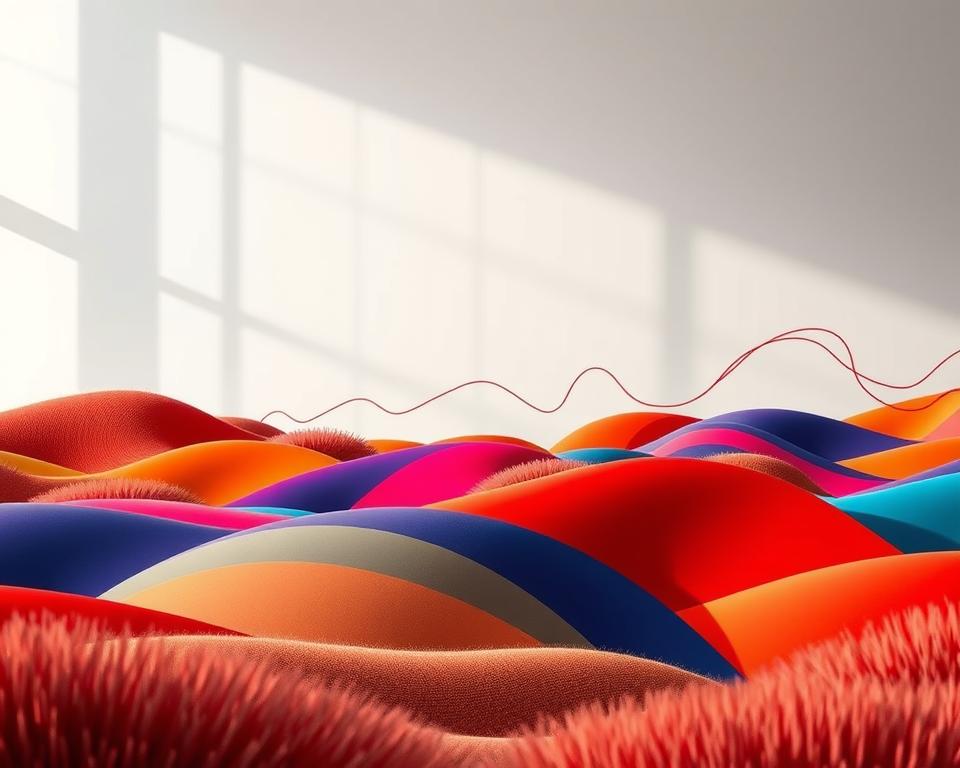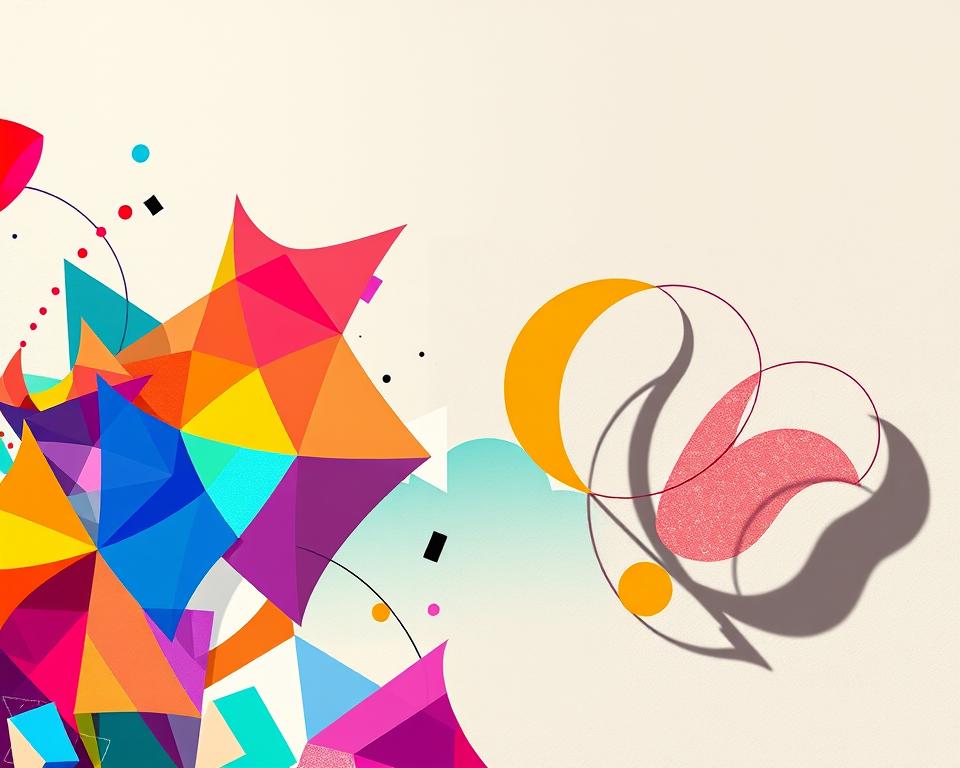Annunci
Question: What small change could free up ideas and give your work new momentum this year?
Creativity 2025 matters because new tools, branding shifts, and better analytics are changing how art and work fit into your life.
Short creative sessions—fifteen minutes of sketching, journaling, or simple craft—help clear your mind and boost focus. Community classes, Patreon-style platforms, and local workshops offer friendly feedback and shared learning.
You’ll get started by seeing how your vision sits inside a changing world. This guide offers practical tips to carve out time, gather ideas, and run small tests without pressure.
Let tell you the way forward: experiment responsibly, use quick feedback, and keep your process tied to values. With steady, evidence-based steps you can make creative practice fit your schedule and support a clearer, calmer life.
Annunci
Introduction: Creativity 2025 and why it matters right now
Small, regular creative habits change how you spend your time and sharpen your attention. In this year, treating art as a short daily practice can reduce stress and help your mind stay clearer between tasks.
Try brief activities like a five-minute sketch, a paragraph in a journal, or a quick craft. These tiny efforts improve focus and make creative work fit your giorno without upending responsibilities.
Many people find that a defined break from social media lowers comparison pressure. Pair that pause with practical resources — a local class, an online workshop, a book, or a short blog exercise — and you create a reliable way to grow.
Annunci
- Work better: small tests sharpen problem-solving.
- Sustain progress: consistency beats intensity.
- Measure and iterate: track what helps your energy and attention.
Keep expectations realistic, test on a small scale, and use data to refine your way forward.
What’s new in Creativity 2025: culture, tech, and the modern creative landscape
The mix of fast tools and slower craft is reshaping what counts as meaningful work. Rapid advances now touch every stage of a piece, from ideation to delivery. That opens clear opportunities and notable risks you should weigh.
Balancing innovation with artistic integrity
Opportunities: New design software and distribution channels let you explore more references and test ideas faster. Programs like Textile Design Lab’s “Summer of Creativity” pair modern tools with community critique so traditional craft stays part of growth.
Risks: Algorithm-driven media and nonstop social media can push you toward trends that dilute your vision. Some painters report better results when they stepped back from feeds and painted seasonal, somber landscapes without optimizing for clicks.
- Spot value: faster iteration, broader references, clearer workflows.
- Set boundaries: limit sharing cadence and protect decision time.
- Use a simple filter: does this tool serve the piece, the audience, and your ethics?
Passaggi pratici: document why you chose a palette or composition, note decisions for later critique, and favor community feedback over instant metrics. This helps you keep integrity and safety central while adopting new tools at your own pace.
Build a creative mindset: flow, focus, and confidence without guarantees
Simple, repeatable activities can prime your mind for flow and steady progress. Use low-pressure steps so practice feels like a gift, not another task.
Entering flow states with simple, low-pressure activities
Start small. Try a 15-minute timed session of journaling, watercolor, or a quick sketch. These activities reduce friction and invite focused attention.
Protect your time with gentle constraints: one brush, a limited palette, or a three-line prompt. Limits make choices easier and increase your chance of entering flow.
- Schedule a short break to reset when the day feels crowded.
- Use prompts you can repeat—three lines, three shapes, three shades—to build momentum.
- Embrace “happy accidents” to turn surprises into unique outcomes and confidence.
- Track short time-on-task and note energy so you learn what supports focus.
- End each session with one small win to prime tomorrow’s start.
Choose practices that fit your season of life. Your love for a tiny ritual—tea, a song, or a cleared table—makes starting easier and keeps your process ethical and sustainable.
Make “empty space” for ideas: time, environment, and your attention economy
When you carve quiet hours into your week, imagination starts to show up. Creating protected space helps you notice new ideas and decide which things deserve your attention.
Unplug from social media in ways that fit your life—try 24 hours, a week, or longer. One creator deactivated Instagram in February 2024 for Lent and extended the break to twelve months. They reported relief from comparison and algorithm pressure and more time for reading art books and finishing paid classes.
Limit streaming and pruning commitments: audit how much media fills your evenings. Set rules like no autoplay at night, delete one app from your home screen, or replace passive scrolls with short making activities—sketches, notes, or studies that move a project forward.
- Test a break length you can keep—small, reversible experiments help you get started.
- Block “empty space” on your calendar as a protected zone for creative activities.
- Exit low-value commitments with respectful messages and a clear timeline.
Read to reset: try The Joy of Missing Out or Necessary Endings to learn boundary setting. Keep a single blog or notebook of prompts so ideas land when space returns.
Your tools in 2025: AI, traditional methods, and hybrid creativity
A clear decision about tools—before you start—keeps ideas flowing and reduces rework. Map tools to intent: what the piece needs, your vision, and your timeline before adding software or AI to your stack.
Use AI for ideation—moodboards, rapid variations, and reference searches—while you document choices and keep your style visible. Treat outputs as starting points, not final work, and record prompts, model settings, and attribution when required.
Keep hand-drawn magic alive by scanning textures, preserving line variation, and layering analog marks inside Procreate or Photoshop. That way your painting studies and landscape sketches translate into repeatable design assets without losing character.
- Match tools to intent: brief, timeline, and audience.
- File hygiene: layers, clear names, and version folders.
- Ethics: set rules for data, attribution, and model settings.
Consider a short course or community critique to build judgment, not just fluency. As a designer, use recorded color swatches and brush notes so your palette and stroke language stay consistent across projects.
From spark to finish: streamline your workflow without losing soul
Capture the spark quickly, then move through controlled steps to protect the original intent.
Idea generation: set a short constraint (theme, color, or reference) and run an AI-assisted moodboard or five thumbnail sketches. Keep the first sketch as a reference so the original idea stays visible during refinement.
Idea generation, drafting, and refinement in hybrid pipelines
Move from sketch to draft in focused blocks. Use quick manual drafts, then one digital pass for composition and color tests. Set clear checkpoints: ideation, draft, critique, and final pass.
Templates, checklists, and versioning for clarity and speed
Create templates for canvas sizes, export settings, and naming (V1, V2, V3). Keep a short checklist to avoid rework: color proof, layer hygiene, and annotated exports.
Co-creation and collaboration while protecting creative intent
Invite community feedback with a prompt: “Focus on composition, not color.” Define roles, credits, and decision rights before you share. Use a brief decision journal to note why you changed a composition, color, or layout.
- Batch palette and brush tests to save time across weeks.
- Run a small challenge to reveal bottlenecks before you scale.
- Score changes lightly (impact vs. effort) to prioritize improvements.
A practical 4-week plan to get started and stay consistent
Start with a clear, testable four-week path that turns small actions into steady progress. This plan keeps time commitments short and makes each week a measurable experiment.
Week one resets mindset and builds a daily habit. Do one short practice (10–20 minutes) each day and write a weekly reflection logging time, energy, and one creative win.
Week one: mindset reset and simple daily practice
- Pick one prompt set (three thumbnails, a one-value study, or a word-to-image sketch).
- Track minutes and note what helped focus or distracted you.
- Deliverable: five thumbnails and a short reflection.
Week two: expanding your toolkit and techniques
Add one new tool or method—an app, course, or traditional technique—and document where it speeds or slows you down.
- Complete a tiny course or tutorial that ends in a single, usable outcome.
- Deliverable: one study using the new tool and a short note on fit for your process.
Weeks three–four: workflow optimization and a mini project
Streamline your design flow. Batch tasks, tidy layers, and set checkpoints to reduce friction.
- Schedule two painting sessions per week to turn studies into assets with clear filenames and notes.
- Execute a mini project (a small series or pattern set) and document decisions.
- Use a simple rubric—clarity of intent, coherence, usability—to self-assess.
Finish by sharing one post or joining a community critique to gather feedback. Commit to one process improvement you will keep for the next weeks and iterate from evidence.
Need a quick reference? Try this short guide to get started with community prompts and friendly feedback.
Measure, reflect, and share: creative analytics for sustainable growth
When you record time, energy, and versions, patterns appear that guide better decisions. Use small, ethical metrics so tracking supports practice instead of stealing joy.

Lightweight metrics help you learn quickly. Track minutes spent, an energy score (1–5), and the number of iterations per session. Keep entries in a short blog or notebook so your notes compound over weeks.
Practical tracking and privacy
- Log time in blocks (10–30 minutes) and add a one-line mood note.
- Count iterations: sketches, drafts, or color passes for each piece.
- Keep data private by using a local file or a private blog—avoid public metrics unless you choose to share.
Portfolio moments and sharing
Pick one painting or art piece per cycle as a portfolio moment. Write a 100-word reflection on intent, outcome, and one lesson. Share in a trusted community for focused critique, or hold work back when you need more refinement.
- Weekly review: what worked, what drained your life, one change next giorno.
- Tag files and notes with simple labels—tool, palette, decision—to reuse past ideas.
- Turn a rough study into a short case study: goal, process, result, takeaway.
Conclusione
A focused daily ritual offers a simple way to protect your time and grow your vision. Keep the habit short so it fits your life and feels doable.
Make space each week for a small test. Track minutes, note energy, and use that data to guide choices in a changing world.
Bring one thing you love — texture, a line, or a color — into your studies. Let your painting and design decisions stay true, and share process with community when it helps.
Follow a clear, simple way: make, reflect, adjust. Use these tips to protect your space, honor your vision, and iterate with care.
And let tell you plainly: your path is unique. Measure what matters, test one or two things next, and move forward with confidence.



